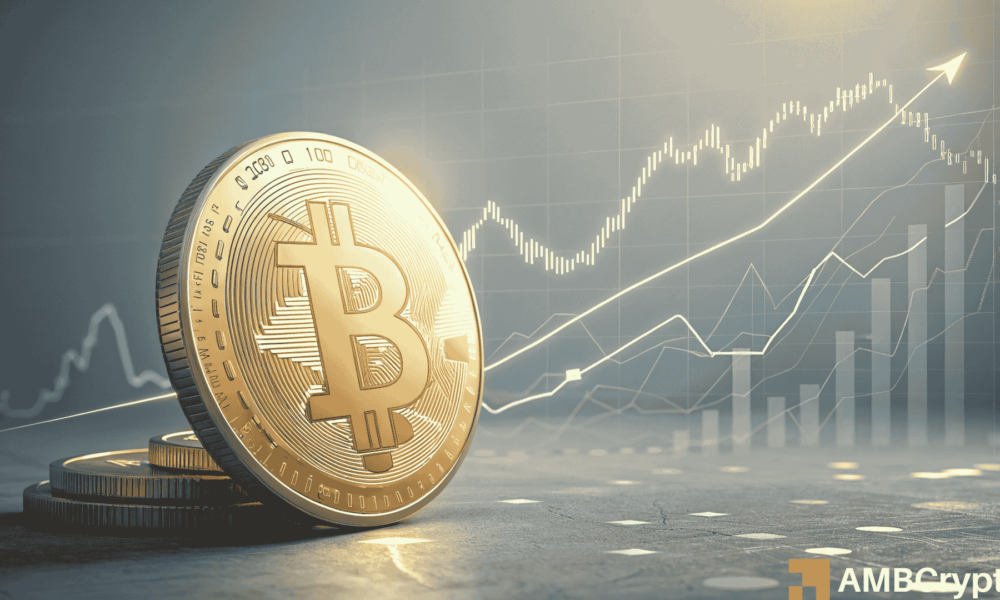Bitcoin’s Reaction to CPI: Analyzing the Stability Amid Inflation Concerns
Understanding the Context of Bitcoin’s Price Stability
Bitcoin’s response to the Consumer Price Index (CPI) readings has become increasingly relevant in today’s economic landscape. Traditionally, cryptocurrencies have exhibited volatility in reaction to macroeconomic data. However, recent trends indicate that Bitcoin has managed to hold steady, even as inflation pressures rise. This reveals a significant shift in market sentiment and poses important implications for investors. In particular, the stability observed in Bitcoin around $110,000 following the latest CPI report raises questions about its role as a hedge against inflation.
Key Drivers Behind September’s Inflation Data
In September, the CPI report revealed a year-over-year increase of 3.0%, slightly above the previous month’s 2.9%. A closer examination shows that gasoline prices played a significant role in this uptick. The core inflation rate, which is closely monitored by the Federal Reserve, increased by a mere 0.2% month-over-month—a slower rate compared to earlier this year. This suggests that while inflation has risen slightly on the surface, the momentum appears to be cooling, which could influence future monetary policy decisions.
A Shift in Market Behavior
Historically, Bitcoin and other cryptocurrencies have faced sell-offs in anticipation of unfavorable CPI data. Traders often hedge against macroeconomic uncertainty, leading to downward pressure on these digital assets. However, this time, Bitcoin exhibited remarkable stability both before and after the CPI release, indicating that the market may have already priced in inflation risks. The cryptocurrency maintained a supportive trading range, highlighting a trend that deviates from previous market behaviors.
Hedging Strategies Indicate Defensive Positions
Recent options data add further depth to this conversation, revealing that traders were primarily hedging for upside exposure between $109,000 and $115,000 rather than placing bearish bets. This indicates a more cautious market posture, suggesting that investors were not overly exposed as the CPI data approached. Consequently, Bitcoin did not need to show bullish momentum to maintain its price; it merely had to remain stable to be viewed positively amid economic uncertainty.
Bitcoin’s Evolving Role in the Macro Landscape
The latest CPI reactions illustrate Bitcoin transitioning from a high-beta risk asset to behaving more like a macro hedge, akin to gold. Both Bitcoin and gold held steady following the CPI report, signaling market perceptions of current inflation as manageable rather than destabilizing. This shift in behavior could position Bitcoin as a viable alternative to traditional safe-haven assets, further enhancing its appeal among investors looking for stability amidst uncertainty.
Implications for Future Monetary Policy and Crypto Market Dynamics
Ultimately, the September CPI readings suggest that inflation is not accelerating at a rate that would compel the Federal Reserve to tighten monetary policy. While the headline inflation metric has seen a slight increase, its underlying components, particularly core inflation, indicate a gradual easing path rather than a reversal. For the cryptocurrency market, this stabilizing environment offers sustained liquidity support, narrative continuity, and reduced macro pressure. The resilience demonstrated by Bitcoin amid these conditions further reinforces the notion that the market views the current inflation landscape as manageable, paving the way for future investment opportunities in the crypto space.

















![Humanity Protocol [H] Rises 138% Following Integration with Sui Ecosystem](https://cryptonewsinsiders.com/wp-content/uploads/2025/10/Gladys-45-1000x600.webp-450x270.webp)